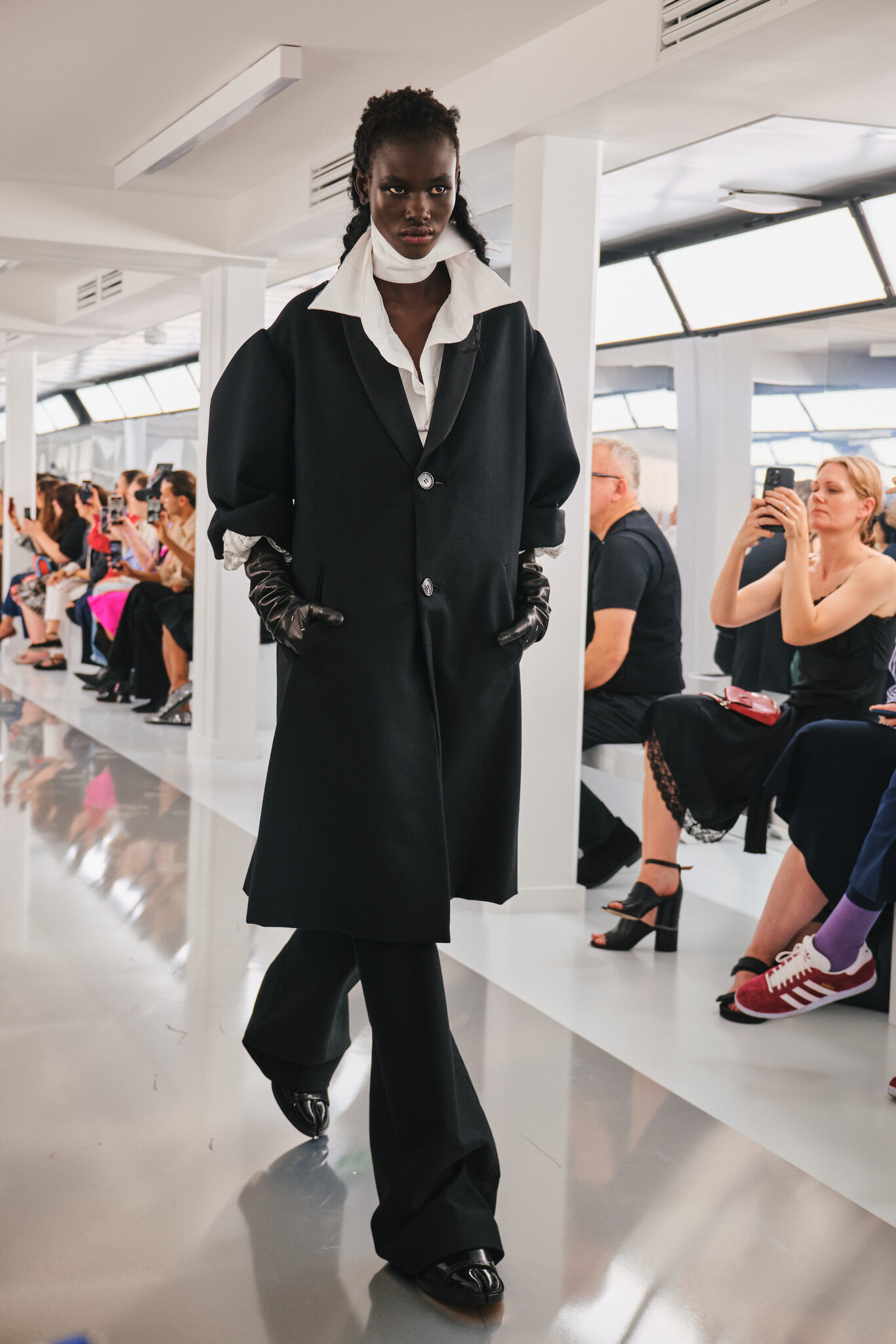Earlier this year, the actress Kristen Stewart appeared on the cover of Rolling Stone in a pocket-covered black leather vest that looked like it had been swiped from a 1980s lesbian bar. Bare-chested, her hair cut into a squirrelly mullet, she wore only one other garment: a white jock strap into which her hand plunged suggestively past the wrist. The 34-year-old former ingénue — who entered the public eye in 2008 as the teenage star of the “Twilight” movie franchise, before coming out in 2017 — seemed to be reclaiming pleasure exclusively for herself. For other appearances to promote “Love Lies Bleeding,” her A24-produced queer thriller, which was released in March, she channeled a similar spirit, showing up in a sea green Dickies bomber jacket over a stomach-baring crop top at the Sundance Film Festival and a structured black leather blazer with a fishnet bra on “Late Night With Seth Meyers.”

It was a press-junket wardrobe that showcased a newly joyful, even giddy aesthetic that’s emerging among a generation of lesbians and young queer stars — an approach to dressing centred on mixing overtly sex-forward, often hyper-feminine pieces with tailored, traditionally butch wardrobe staples. “It’s so playful and obnoxiously sexy,” says the New York-based fashion designer Daniella Kallmeyer, 37. “It’s not about a ‘typical’ look. There’s no stereotypical way to dress queer or like a lesbian. It’s about unapologetically owning your identity.” In January, the singer Reneé Rapp wore a hot pink bustier with a silky blazer to the premiere of the “Mean Girls” remake, and the singer Billie Eilish attended the Golden Globes in a bulbous black Willy Chavarria suit jacket. In the March issue of Vogue, there was the actress Ayo Edebiri wearing barely there miniskirts with wildly oversize button-downs.

While this rupture of gendered fashion norms in the mainstream might seem new, the look is not, of course, without precedent. In 1653, the French artist Sébastien Bourdon painted the Swedish monarch Christina in a languid black silk dress layered over a white linen shirt, tied at the collar in a style commonly worn by men. (The following year, Christina, who had already refused to marry, abdicated, before taking on a plethora of lovers of both genders in Rome.) Nearly two centuries later, the American artist Romaine Brooks painted a generation of Parisian lesbians in “new woman” bobs, monocles and tailored jackets. And after World War II, a collision of masculine and feminine aesthetics occurred because of renewed enforcement of legislation like New York’s 1845 “three-piece clothing law,” which required women to wear three articles of “feminine” clothing (bra, underwear and skirt) or risk arrest during frequent raids of queer bars — leading to dimly lit rooms filled with butches wearing tailored suit tops and narrow navy skirts. In these environments, despite the confines, fashion was a crucial signifier, a means of forging community and maybe even falling in love as a result.

It’s not so surprising, then, that as the rights of women and queer people are once again under threat, lesbians are asserting their autonomy with clothes. “In the past decade, the political landscape encouraged queer visibility in various forms, but now politicians are attempting to squash that visibility,” says the writer Eleanor Medhurst, whose book, “Unsuitable: A History of Lesbian Fashion,” will come out this month. “Queer women are pushing back against that with fashion, which can play a really important role in making ourselves visible in the world.” And for women of any sexuality looking to affirm their agency through what they wear, who better to take cues from than lesbians, who’ve long been excluded, to varying degrees, from those pillars of traditional femininity, marriage and motherhood? Lesbian fashion has always been about more than just clothes; it’s an attempt to embody a truly liberated world that doesn’t yet exist.
